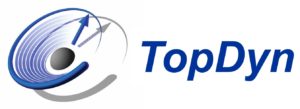

Seminar über die Physik der kondensierten Materie (SFB/TRR173 Spin+X und SFB/TR288 Kolloquium, TopDyn-Seminar)
Dec. 6, 2018 at
2:15 p.m.
in
Gernot-Graeff-Raum, Staudinger Weg 7, 05-431
Univ-Prof. Dr. Jure Demsar
Univ.-Prof. Dr. Hans-Joachim Elmers
Univ.-Prof. Dr. Mathias Kläui
Univ.-Prof. Dr. Thomas Palberg
Multi-antiferroics: Designing magnetoelectric effect on the sub-unit-cell level
Prof. Istvan Kezsmarki (Experimental Physics V, Center for Electronic Correlations and Magnetism, University of Augsburg)
Multiferroics permit the magnetic control of the electric polarization and the electric control of the magnetization. These static magnetoelectric (ME) effects are of enormous interest: The ability to read and write a magnetic state current-free by an electric voltage would provide a huge technological advantage. Dynamic or optical ME effects are equally interesting, because they give rise to unidirectional light propagation as recently observed in several multiferroic compounds [1-5].
In conventional media the propagation of waveslight, magnons and phononsis reciprocal, that is counter-propagating waves experience the same material properties. However, reciprocity can be violated in multiferroic materials, where the velocity and the attenuation depend on the ±k direction of the wave propagation [1]. Such non-reciprocal propagation can be the consequence of e.g. the dynamic magnetoelectric effect emerging in materials with simultaneously broken time reversal and spatial inversion symmetries. Recently, the non-reciprocal wave propagation has also been observed in multi-antiferroics [6], i.e. in materials with coexisting purely antiferroelectric and antiferromagnetic orders. The symmetry-based guidance for the synthesis of multi-antiferroics and the connection to antiferromagnetic spintronics will also be discussed.